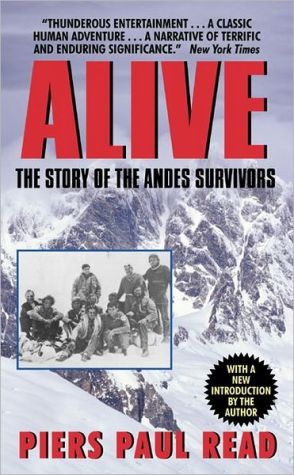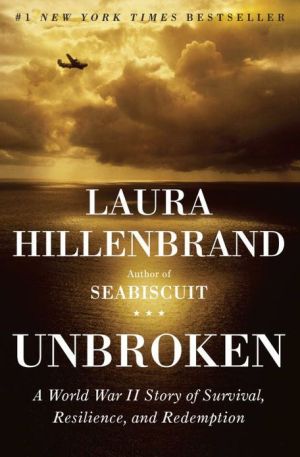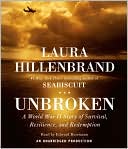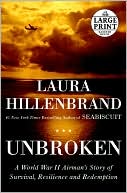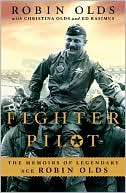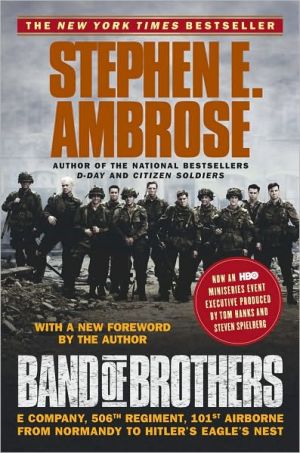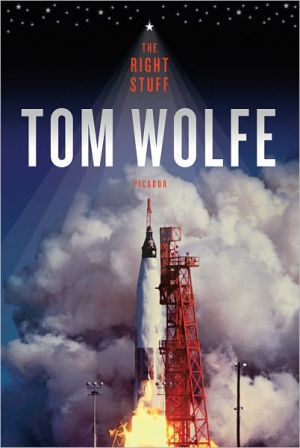Alive: The Story of the Andes Survivors
On October 12, 1972, a plane carrying a team of young rugby players crashed into the remote, snow-peaked Andes. Out of the forty-five original passengers and crew, only sixteen made it off the mountain alive. For ten excruciating weeks they suffered deprivations beyond imagining, confronting nature head-on at its most furious and inhospitable. And to survive, they were forced to do what would have once been unthinkable ...\ This is their story — one of the most astonishing true adventures of...
Search in google:
On October 12, 1972, a plane carrying a team of young rugby players crashed into the remote, snow-peaked Andes. Out of the forty-five original passengers and crew, only sixteen made it off the mountain alive. For ten excruciating weeks they suffered deprivations beyond imagining, confronting nature head-on at its most furious and inhospitable. And to survive, they were forced to do what would have once been unthinkable ... This is their story — one of the most astonishing true adventures of the twentieth century. John Barkham Reviews This book will excite you, shock you, at times revolt you, but you are not likely to forget it.
Chapter One\ Uruguay, one of the smallest countries on the South American continent, was founded on the eastern bank of the River Plate as a buffer state between the emerging giants of Brazil and Argentina. Geographically it was a pleasant land, with cattle running wild over immense pasture lands, and its population lived modestly either as merchants, doctors, and lawyers in the city of Montevideo or as proud and restless gauchos on the range.\ The history of the Uruguayans in the nineteenth century is filled first with fierce battles for their independence against Argentina and Brazil and then with equally savage civil skirmishes between the Blanco and Colorado parties, the Conservatives from the interior and the Liberals from Montevideo. In 1904 the last Blanco uprising was defeated by the Colorado president, José Batlle y Ordóñez, who then established a secular and democratic state which for many decades was regarded as the most advanced and enlightened in South America.\ The economy of this welfare state depended upon the pastoral and agricultural products which Uruguay exported to Europe, and while world prim for wool, beef, and hide remained high, Uruguay remained prosperous but in the course of the 1950s the value of these commodities went down and Uruguay went into a decline. There was unemployment and inflation, which in turn gave rise to social discontent. The civil service was overstuffed and underpaid; lawyers, architects, and engineers -- once the aristocracy of the nation-found themselves with little work and were paid too little for what there was. Many were compelled to choose secondary professions. Only those who owned landin the interior could be sure, of their prosperity. The rest worked for what they could get in an atmosphere Of economic stagnation and administrative corruptiom\ As a result, there arose the first and most notable movement of urban guerrilla revolutionaries, the Tupamaros, whose ambition was to bring down the oligarchy which governed Uruguay through the Blanco and Colorado parties. For a while things went their way. They kidnaped and ransomed officials and diplomats and infiltrated the police force, which was set against them. The government called upon the army, which ruthlessly uprooted these urban guerrillas from their middle-class homes. The movement was suppressed; the Tupamaros were locked away.\ In the early 1950s a group of Catholic parents, alarmed at the atheistic tendencies of the teachers in the state schools-and dissatisfied with the teaching of English by the Jesuits-invited the Irish Province of the Christian Brothers to start a school in Montevideo. This invitation was accepted, and five Irish lay brothers came out from Ireland by way of Buenos Aires to found the Stella Maris College -- a school for boys between the ages of nine and sixteen -- in the suburb of Carrasco. In May of 1955 classes were started in a house on the rambla which looked out under vast skies over the South Atlantic.\ Though they spoke only halting Spanish, these Irish Brothers were well suited to the task they now sought to perform. Uruguay might be far from Ireland, but it too was a small country with an agricultural economy. The Uruguayans ate beef as the Irish ate potatoes, and life here, like life in Ireland, was led at a gentle pace.\ Nor was the structure of that Part Of Uruguayan society to which they catered unfamiliar to the Brothers. The families who lived in the pleasant modern houses built amid the pine trees of Carrasco -- the most desirable suburb of Montevideo were mostly large, and there were strong bonds between parents and children which persisted through adolescence into maturity. The affection and respect which the boys felt for their parents was readily transferred to their teachers. This proved enough to maintain good behavior and, at the request of the parents of the their pupils, the Christian Brothers gave up their long-standing use of the disciplinary cane.\ It was also customary in Uruguay for young men and women to live with their parents even after they had left School, and it was not until they got married that they left home. The Christian Brothers often asked themselves bow it was that, in a world where acrimony between generations Sometimes seemed to be the spirit Of the age, the citizens at Uruguay -- or at least the residents of Carrasco -- should be spared this conflict. It was as if the torrid vastness of Brazil to the north and the muddy waters of the River Plate to the south and west acted not only as natural barriers but as a protective shell in a cocoon of time.\ Not even the Tupamaros troubled the Stella Maris College. The pupils, who came from Catholic families with conservative inclinations, had been sent by their parents to the Christian Brothers because of this order's traditional methods and old-fashioned objectives. Political idealism was more likely to flourish under the Jesuits, who trained the intellect, than under the Christian Brothers, whose aim was to build the character of their boys -- and the generous use of corporal Punishment, which they bad abandoned at the request of the parents, was not the only means to this end at their disposal. The other was rugby football.\ The game played at the Stella Maris College was and still is the same as that played in Europe. Two teams of fifteen men face one another on the field, They wear no helmets or protective padding, and there are no substitutes. The objective of each team is to place the oval ball on the try line defended by the other side or to kick the ball over the bar and between the posts of theH-shaped goal. The ball can be kicked, carried, or passed back; the player who holds it can be tackled by an opponent who will throw himself through the air to bring him down -- grabbing him around the neck, the waist, or the legs. The only defense against a tackle is to dodge it...\ Alive. Copyright © by Piers Paul Read. Reprinted by permission of HarperCollins Publishers, Inc. All rights reserved. Available now wherever books are sold.
\ Philadelphia InquirerA great book ... An incredible saga. Read's accomplishment in recording a struggle both physical and spiritual is superb.\ \ \ \ \ John Barkham ReviewsThis book will excite you, shock you, at times revolt you, but you are not likely to forget it.\ \ \ NewsweekA classic in the literature of survival.\ \
